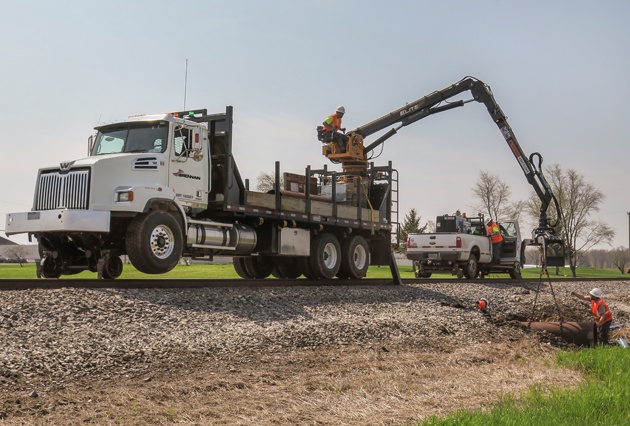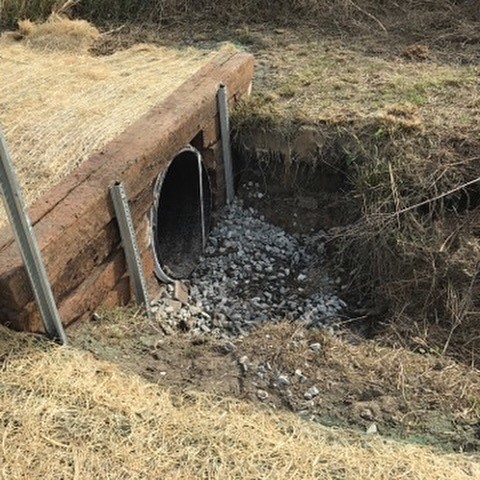Culvert Setup Made Easy: Step-by-Step Overview for Success
From picking the appropriate culvert dimension to incorporating proper water drainage measures, each step in the installment process plays a crucial duty in the performance and durability of the culvert system. Remain tuned to uncover the necessary steps and factors to consider that can make culvert installation a smooth and effective undertaking.
Picking the Right Culvert Size
Choosing the suitable culvert size is vital for making certain effective water flow and architectural integrity in culvert installment projects - Pad Construction. The dimension of the culvert straight impacts the flow ability of water through the framework. A culvert that is as well small can bring about flooding and overflow, while one that is also big might lead to reduced water velocity, potentially triggering sediment accumulation and clogs
To identify the appropriate culvert size, aspects such as the watershed location, top circulation prices, and hydraulic efficiency need to be thoroughly taken into consideration. Estimations based on these specifications help in choosing a dimension that can effectively manage the expected water volume while lessening the threat of obstructions and structural failure.
It is necessary to get in touch with engineering standards and criteria to make sure that the picked culvert dimension satisfies the project demands and regional guidelines (Pad Construction). By picking the best culvert dimension, job supervisors can maximize water circulation, prevent possible problems, and enhance the general efficiency and durability of the culvert setup
Preparing the Installation Website
Reliable culvert setup necessitates careful preparation of the installment site to guarantee optimal structural assistance and functionality. Prior to beginning the setup process, it is vital to remove the website of any type of debris, greenery, or obstructions that could hamper the culvert's placement.
Moreover, it is important to think about variables such as soil composition, groundwater levels, and ecological impacts when preparing the installation site. Carrying out a detailed site evaluation can help determine any type of possible obstacles or risks that might affect the culvert's performance. By taking the time to prepare the installation site appropriately, you can help assure an effective culvert installation that meets structural requirements and guarantees long-term functionality.
Putting the Culvert Appropriately

The grade at which the anonymous culvert is positioned is essential for keeping a proper slope for water flow. A steady slope aids prevent pooling and advertises efficient water drainage. Additionally, the culvert must be oriented appropriately to guarantee that the inlet and electrical outlet remain in the correct areas. This orientation is crucial for the culvert to work successfully in taking care of water flow.
Backfilling and Condensing the Dirt
Appropriate backfilling and compaction of the soil around the culvert is important to make certain security and protect against potential issues in the future. Once the culvert is appropriately positioned, the following crucial action is to backfill the location around it with appropriate material.
Compaction helps in decreasing the chances of settlement and makes sure uniform assistance around the culvert. It is vital to portable the soil evenly on all sides of the culvert to keep its structural integrity.
Appropriate backfilling and compaction not only supply stability to the culvert but also assist in avoiding dirt erosion and preserving the longevity of the culvert system.
Ensuring Correct Drain Assimilation
Integrating reliable water drainage remedies plays a critical function in the total functionality and long life of culvert installations. Correct water drainage integration is vital for taking care of water flow, protecting against erosion, and making sure the structural honesty of the culvert system. To achieve this, it is crucial to make more info here an extensive drain strategy that considers factors such as the volume of water anticipated, the topography of the area, and the kind of dirt existing.

In addition, including attributes like disintegration control procedures, such as riprap or find plants, can even more enhance the performance of the drainage system. By carefully intending and carrying out these drain services, culvert installments can work effectively and hold up against the test of time.
Final Thought
To conclude, correct culvert setup is important for maintaining reliable drain systems. By choosing the right culvert dimension, preparing the setup site, positioning the culvert properly, backfilling and condensing the soil, and making certain correct drain integration, success can be achieved. Adhering to these steps will certainly assist ensure the long life and performance of the culvert, eventually adding to the general success of the water drainage system.